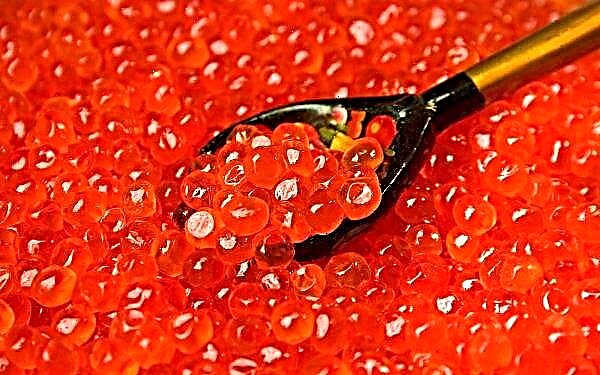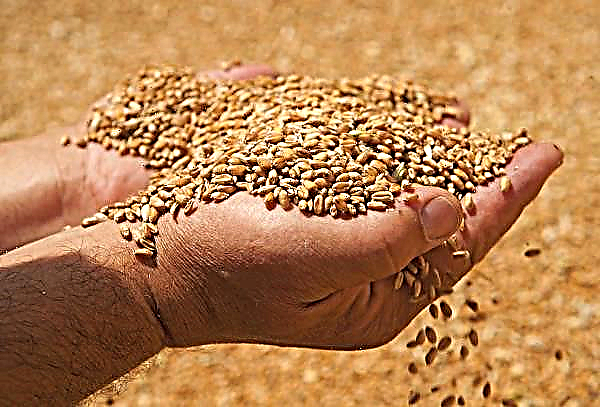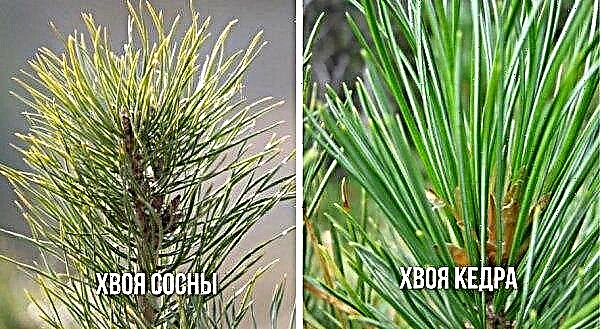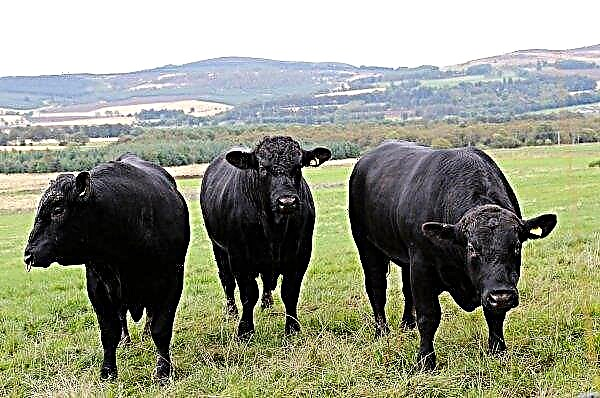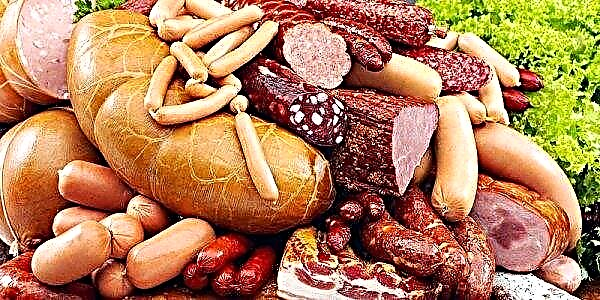Weigela early is a flowering shrub that belongs to the family Honeysuckle. In the wild, this culture can be found in the Far East of the Russian Federation, China and some parts of Korea. The plant in question also has such names as weigela pleasant and middendorff. For a plant to have a beautiful and healthy appearance, it requires the proper planting and necessary care.
Botanical description of the species
Weigela early has its own distinctive external features that distinguish this plant from its other relatives.

The botanical description of this ornamental plant is:
- Bush. The height of the culture can reach 2 m. This deciduous plant has a thick and spreading shape. The early Weigela trunk has a light brown bark, and the young branches are painted in a reddish hue.
- Sheet. This part of the plant is located on the petioles. Leaves have serrated serrated edges. The shape is elongated elliptical, 6-7 cm long. Summer foliage turns bright green, and autumn foliage is buffy or gray-yellow.
- Flower. The cup consists of five blades, which are separated or merged from below. The flowers are white, yellow, as well as burgundy and purple. They are located on young branches in the axils of foliage.
- Fruit and seeds. It occurs after flowering and is presented in the form of an egg-shaped and cylindrical box, having a length of up to 2.5 cm. From above, the fruit is narrowed and opens with two wings. Seeds are small and have an angular silhouette.
Did you know? The Weigel clan was named in 1780 by C.P. Tunberg in honor of the famous German scientist K.E. von Weigel. And the species name of this bush was obtained in the 19th century thanks to A.F. Middendorff.
Landscape design application
Weigela early is often found in gardens, as this bush can be combined with various plants.
Often you can find the culture in question, planted near:
- lilacs;
- coniferous shrubs;
- Spirea
- hydrangeas;
- ornamental cereals, etc.

A combination of several varieties of weigels looks very beautiful. Better to pick neighbors of approximately the same height. A feature of this bush is the ability to decorate unsightly areas, as well as create the desired volume of the composition. Often, early Weigel can be found on alpine slides or in rocky gardens.
Thanks to their beautiful colors, landscape designers use this culture to create hedges.. Also, when alternating bushes of various colors, you can divide the territory into zones - platforms or terraces. To create a hedge, this plant is also planted along with lilac or mock up.
Important! For group planting, the early Weigel should be planted with an indent of 1.8 m.
The culture in question is perfectly combined in compositions with perennial and tree shrubs.
For a combination of early weigels with herbaceous plants are used:
- poppy;
- sedge;
- decorative bow;
- bloodroot.
A beautiful color effect will be obtained when the crop in question is planted together with plants that have evergreen or yellowish leaves (needles). These neighbors include thuja and juniper.
Also often landscape designers to create compositions with early Weigela use barberry and Japanese quince.

Outdoor planting and care
The planting procedure and further agrotechnical actions are very important for maintaining the decorative bush.
Many gardeners follow a monthly table that demonstrates acceptable planting and crop care procedures. She looks like this:
| April | Landing process; propagation by cuttings; intensive irrigation, first top dressing; sanitary haircut. |
| May | Planting; plentiful hydration; weeding, cultivation, mulching. |
| June | Fertilizer (second); moderate watering, weeding and loosening; propagation by cuttings (not winter). |
| July | Bush formation; moisturizing, weeding, loosening. |
| August | The same procedures as in the second summer month, except for the forming trim. |
| September | Planting; weeding, watering, loosening; introduction of mulch and peat. |
| October November | Preparing for the winter |
| December-March | Compaction of snow around the plant to protect against rodents; cleansing branches from precipitation so that the shoots do not break. |
Landing time
Weigel early usually planted in the first half of spring. The best dates are the end of March - April. It is very important to complete the procedure in the interval between when the soil has already warmed up enough and the kidneys have not yet swollen. Experts do not recommend autumn planting. This is due to the fact that the seedlings do not have time to take root and then do not withstand the winter. Therefore, for the owners of young seedlings of early veigels purchased in the fall, it is recommended to wait until spring.
Often, gardeners in the southern and subtropical regions still plant in the fall. This is due to the presence of long Indian summers and relatively warm winters.
Video: Planting, care and reproduction of weigels
Site selection and soil preparation
Weigela bush early settles well in areas with good lighting, which are well protected from strong cold winds. It is allowed to plant a bush in partial shade of more powerful trees, but it should be borne in mind that the crop in question will not bloom so densely. Weigel is not recommended to be placed early in the lowlands to avoid its freezing.

The main requirements for the soil are its nutritional value, lightness and permeability, as well as moisture retention. The earth should be slightly acidic with pH 5.5–6.5, but it is also permissible to plant on neutral soils.
It is recommended to dig a planting hole with a size of 0.5 × 0.5 × 0.5 m. The distance between the bushes is 2.5 m. If the earth is not nutritious enough, then it is recommended to add a nutritious mixture of turf soil and humus to the bottom of the pit. Then the diameter of the pit must be increased to 1 m, but leave the depth half meter. It is important to loosen the soil, and if necessary add peat to increase the moisture capacity of the earth.
Landing algorithm
Most often, gardeners for planting early veigels take three-year-old seedlings.
The landing process itself goes this way:
- The young plant is placed in a prepared hole, carefully distributing the roots and densely covered with soil from above so that there are no voids.
- A large amount of liquid (from 3 buckets) is poured into the trunk circle.
- As the soil settles, you need to add more soil.
- As mulch, you can make peat or wood chips.
- All shoots must be cut in half, but if the seedling is already with flowers, then this procedure should be skipped.

Watering and feeding
Fertilizing and regular watering are necessary elements in agricultural technology. An early weigela bush should be fed three times per season.
This procedure is accompanied by the following steps:
- First time fertilize the culture before the start of the growing season, when the snow has not yet completely melted. Mineral fertilizing is distributed around the plant. Superphosphate and urea are considered the best option.
- Second feeding carried out when buds begin to form. Chlorine-free potash fertilizers are recommended. You can also choose complex mineral top dressing. The main condition of this universal fertilizer is the content of an equal amount of nitrogen, potassium and phosphorus.
- Third feeding performed in August. Nutrients must necessarily contain a large amount of potassium. So the shoots will stiffen faster and be able to survive the winter.
Speaking of watering, it should be remembered that in the natural environment of the weigel, the early one is often found in the littered territories of East Asian countries, where the soil is well saturated with moisture. Therefore, caring for the bush in question, it is necessary to ensure that the earth does not dry out. This may result from poor flowering of the culture and an obstacle to its development. The bush must be moistened regularly, and then covered with mulch.
One bush needs 8-10 liters of water. The procedure is carried out every 1.5 weeks or every 3-4 days in hot, dry weather. Abundant watering is especially necessary for young plants in the first three years after planting.

Loosening, weeding and mulching
The procedures under consideration are also considered an integral part of early Weigel care.
Soil cultivation is usually carried out when during the season the soil around the plant is noticeably compacted. It is necessary to go deep into the ground by a maximum of 8 cm, since the root system is located closer to the surface, and there is a possibility of damage to the underground organ of culture. If no mulch was introduced, then the weeding procedure should become constant as the weeds grow. Do not go deep into the ground more than 5-8 cm.
 After watering, it is also recommended to make sawdust, pine bark, peat. This mulch must be sprinkled with a 6-centimeter layer
After watering, it is also recommended to make sawdust, pine bark, peat. This mulch must be sprinkled with a 6-centimeter layer
Shelter for the winter
For the southern regions of Russia Weigela early wintering will pass without any problems, even without much preparation. For the plant, it will be enough to carry out hilling and mulching before the onset of frost.
For snowy areas bush wintering will also be successful. This is due to the fact that a large layer of snow can protect the roots from freezing. It is only necessary to tie the branches and gently tilt them to the earth's surface.
Important! The procedure for sheltering early weigels should be carried out in dry weather, because the presence of moisture can further provoke the formation of rot on the shoots.
Growing the bush in question in other regions of the Russian Federation requires the use of shelters for wintering. The plant should be wrapped with spanbond, and sprinkled with a leaf trunk circle with leaf litter or spruce branches. The design is removed in late March - early April.

Breeding methods
The bush under consideration can be obtained in these three ways:
- by seeds;
- cuttings;
- layering.
The latter method is considered one of the simplest and less expensive. It is only necessary to lower the branch from the lower layer to the earth's surface, make an incision and sprinkle this place with soil. In the next spring season, the stalk will take root and will be ready for transplanting into the open ground.
Did you know? For the first time in Russia, a weigela bush was planted in 1850. Despite this, the mass cultivation of this plant began only a century later.
Seeds
Weigela early refers to those garden crops that are well propagated by seeds. It is permissible to store the collected seed for no more than a year. Preparing planting material is not necessary. Sowing is usually carried out in containers for seedlings or similar designs and ends with moistening the soil. The pick occurs since the appearance of 2 pairs of leaves. Weeding and watering is carried out. When 3 or more pairs of leaves and buds are already visible on the plant, they are ready for transplantation into the open ground.
There is also another variant of this type of breeding. To do this, in November, it is necessary to cut the testes and dry in the room. Store planting material in a dry and dark room.. Planting in open ground seeds is carried out in the spring.

Cuttings
This vegetative method of reproduction is considered the best option for early Weigela.
The procedure is performed in this way.:
- It is necessary to cut off 10-centimeter last year's processes from the bush. This event should be held at the end of May or in June.
- Remove the bottom pair of leaves and cut off the tops.
- Stems are soaked in a solution that stimulates root growth for 5 minutes.
- A container with sand and peat is prepared, and planting material is immersed there, deepening by 1-2 cm.
- Cuttings must be covered with a jar, plastic wrap or a bottle.
- The seedling must be watered twice a day until the plant takes root.
- In spring, the plants are ready for planting.

Thus, early weigela is considered to be very beautiful shrubs, which can please with flowers of different shades. Due to its high decorativeness and unpretentiousness in planting and care, it has become a favorite among gardeners and landscape designers.

